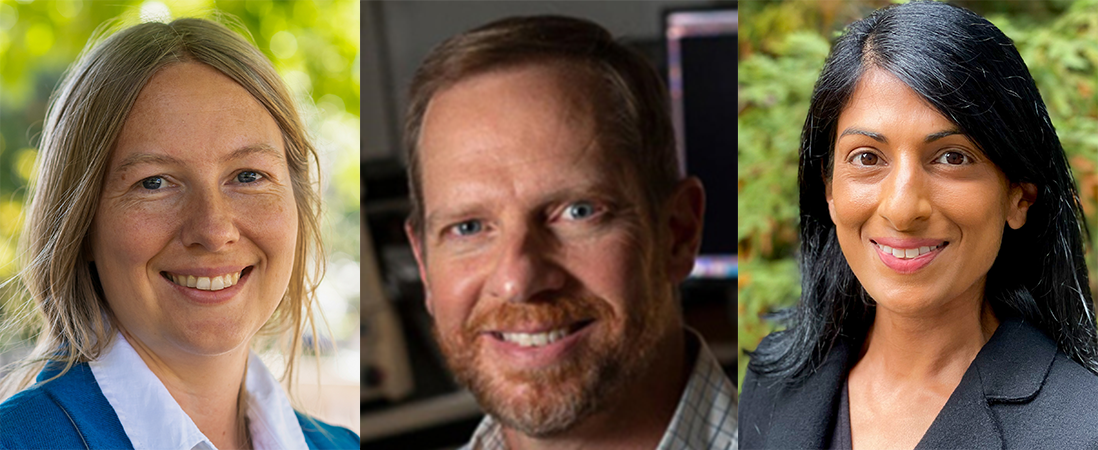As scientists move closer to testing regenerative therapies for eye disease, techniques are needed to monitor transplanted cells as they integrate with host tissues. The NEI, a part of the National Institutes of Health, has awarded $3.7 million per year for five years to three projects that aim to develop models that can gauge the survival and integration of regenerated cells, including light-sensing photoreceptors and retinal ganglion cells (RGCs), which carry visual signals from the retina to the brain.
“The models developed through these projects will help us better understand crucial aspects of blinding disease and what happens to the retina during regeneration,” said NEI Director Michael F. Chiang, M.D.
The three most common causes of blindness in the United States are age-related macular degeneration, diabetic retinopathy, and glaucoma. These diseases attack and destroy cells of the retina, the light-sensitive tissue in the back of the eye. The NEI launched the AGI in 2013 to develop therapies that replace lost or damaged cells of the retina and thereby preserve or even restore vision.
Accelerating photoreceptor replacement therapy with in-vivo cellular imaging of retinal function
Grant number 1U24EY033275

From left to right are Juliette McGregor, Ph.D., University of Rochester; David Gamm, M.D., Ph.D., University of Wisconsin; and Teresa Puthussery, O.D., Ph.D., University of California Berkeley.
Juliette McGregor has assembled a multidisciplinary team of researchers to evaluate the survival and functional integration of transplanted photoreceptors. Her team will leverage imaging technology developed with prior AGI funding to locally ablate photoreceptors and evaluate restored retinal activity in vivo. In collaboration with David Gamm and colleagues at the University of Wisconsin, they will transplant replacement photoreceptors into damaged retina as microaggregates and in scaffolds designed to promote integration. Teresa Puthussery will examine the impact of photoreceptor loss and restoration of photoreceptor signaling on existing retinal circuitry.
A two-pronged approach to generating novel models of photoreceptor degeneration for regenerative cell therapy
Grant number: 1U24EY033272

From left to right are Yingbin Fu, Ph.D., Baylor College of Medicine; Michiko Mandai, M.D., Ph.D., RIKEN Center for Biosystems Dynamics Research; Takeshi Iwata, Ph.D., National Hospital Organization, Tokyo Medical Center; and Takashi Yamamoto, Ph.D., Hiroshima University.
Yingbin Fu and collaborators will compare two potential strategies for evaluating regeneration of the retina. In the first strategy, they will use lasers to specifically ablate photoreceptors in an advanced animal model. The second strategy will use a gene editing technology called Platinum Talen to selectively prune photoreceptors from the retina through gene disruption. The latter approach more accurately depicts the gradual loss of photoreceptors observed in inherited retinal diseases such as retinitis pigmentosa. After characterizing the anatomical changes in both ablation models, they will evaluate their ability to incorporate stem cell-derived replacement retina in host animals. The project will combine leading expertise in Platinum Talen gene editing from a team led by Takashi Yamamoto, inherited retinal degeneration and advanced animal disease models from teams led by Fu and Takeshi Iwata, and regenerative cell therapy from a team led by Michiko Mandai.
Overcoming barriers to retinal ganglion cell replacement in experimental glaucoma
Grant number: 1U24EY033269

From left to right are Jason Meyer, Ph.D., Indiana University; Brad Fortune, O.D., Ph.D., Legacy Research Institute; Benjamin Sivyer, Ph.D., Oregon Health and Science University; Yvonne Ou, M.D., University of California San Francisco; and Gareth Howell, Ph.D., The Jackson Laboratory.
Jason Meyer and colleagues are using an established glaucoma model from the laboratory of Brad Fortune for testing manipulations to improve the long-term survival of transplanted RGCs derived from human induced pluripotent stem cells from the Meyer lab. Glaucoma causes permanent damage to the optic nerve—the bundle of data cable-like RGC axons that travel between the retina and brain. To enhance RGC transplant survival and integration, they will modify the immune interactions of donor and host tissue, modify the cellular age of host retina, and enhance neural connectivity of donor ganglion cells into host retinal circuitry. Ben Sivyer and Yvonne Ou will help the team assess the functional and anatomical integration of donor ganglion cells in the glaucoma model. Gareth Howell will provide expertise in immune-like responses in glaucoma.
The three teams will share data and technology with each other and with the previous AGI Translational Models Consortium. An external scientific oversight committee will closely monitor progress, provide technical recommendations, and assist evaluation of project milestones.
The Audacious Goals Initiative for Regenerative Medicine is an NEI effort to push the boundaries of vision science and restore vision through regeneration of the retina. By facilitating cross-disciplinary research, NEI is tackling the most devastating and difficult-to-treat eye diseases. Visit the NEI website to learn more about the Audacious Goals Initiative.
###
NEI leads the federal government’s research on the visual system and eye diseases. NEI supports basic and clinical science programs to develop sight-saving treatments and address special needs of people with vision loss. For more information, visit https://www.nei.nih.gov.
About the National Institutes of Health (NIH): NIH, the nation’s medical research agency, includes 27 Institutes and Centers and is a component of the U.S. Department of Health and Human Services. NIH is the primary federal agency conducting and supporting basic, clinical, and translational medical research, and is investigating the causes, treatments, and cures for both common and rare diseases. For more information about NIH and its programs, visit https://www.nih.gov/.
NIH…Turning Discovery Into Health®